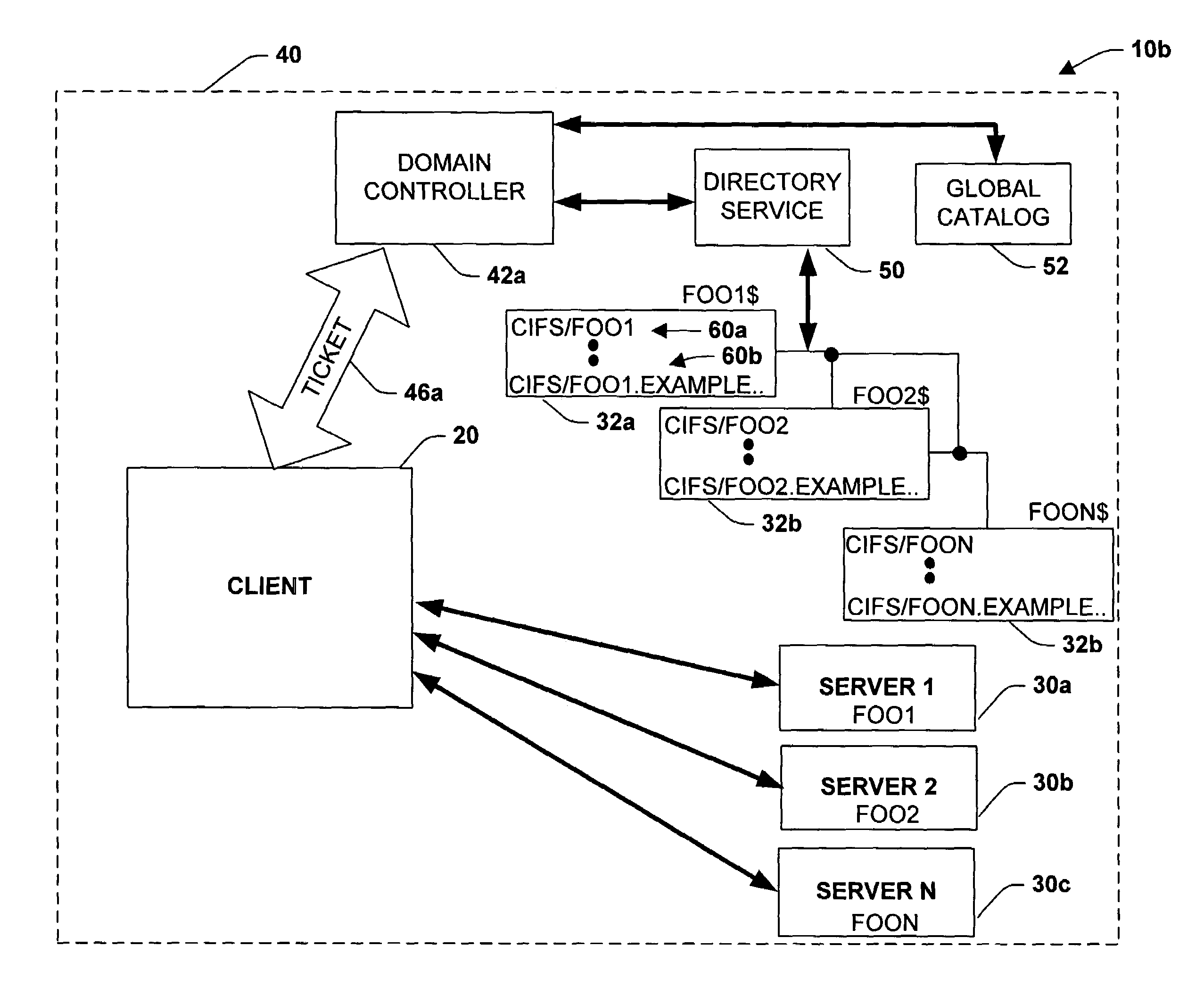System and method for managing and authenticating services via service principal names
a service principal and service technology, applied in the field of computer systems, can solve the problems of increasing the management burden of the authentication process, the cost of client side configuration from an administration point of view, and the inability of the authentication mechanism to maintain extensive mappings, so as to mitigate the management burden of the conventional system
- Summary
- Abstract
- Description
- Claims
- Application Information
AI Technical Summary
Benefits of technology
Problems solved by technology
Method used
Image
Examples
Embodiment Construction
[0029]The present invention is now described with reference to the drawings, wherein like reference numerals are used to refer to like elements throughout.
[0030]In accordance with the present invention, a system and method is provided that employs name cannonicalization by a trusted 3rd party to provide authentication between a client and a server. This mitigates configuration and management problems associated with conventional systems by simplifying administration of service names and minimizing configuration information required for each computer system. More specifically, a system and method is provided wherein a trusted third party is employed to handle cannonicalization of names, provide aliases for users and services and to enable the trusted third party to determine a trusted realm authentication path by generating referrals to other realms in order to locate associated principals for requested services. Furthermore, as will be described in more detail below, authentication ...
PUM
 Login to View More
Login to View More Abstract
Description
Claims
Application Information
 Login to View More
Login to View More - R&D
- Intellectual Property
- Life Sciences
- Materials
- Tech Scout
- Unparalleled Data Quality
- Higher Quality Content
- 60% Fewer Hallucinations
Browse by: Latest US Patents, China's latest patents, Technical Efficacy Thesaurus, Application Domain, Technology Topic, Popular Technical Reports.
© 2025 PatSnap. All rights reserved.Legal|Privacy policy|Modern Slavery Act Transparency Statement|Sitemap|About US| Contact US: help@patsnap.com



